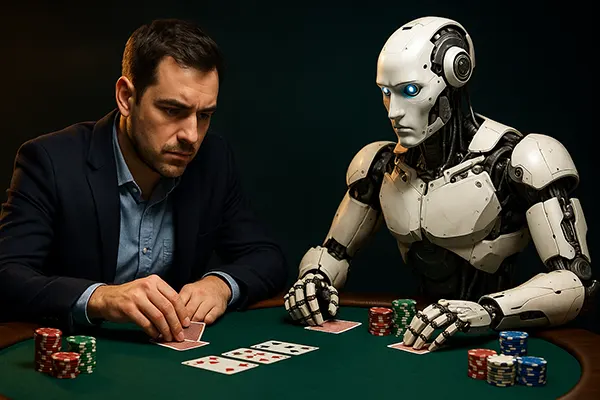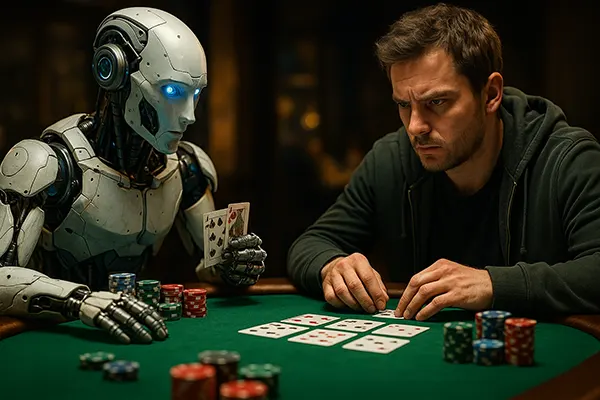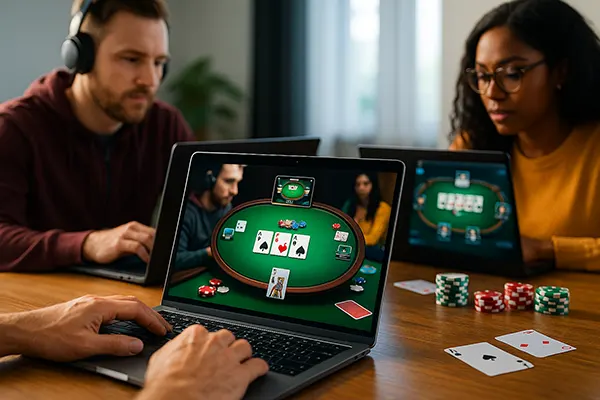
Playing Against PokerGPT: Can a Human Outsmart the AI?
Artificial intelligence has transformed various domains — from finance to creative writing — and poker is no exception. In 2025, PokerGPT-style bots have become serious opponents at the virtual table. But how does a typical poker player fare when up against such advanced algorithms? This article explores how these AI systems operate, what weaknesses they have, and whether it’s possible to prepare to beat them.
How PokerGPT Makes Its Decisions
The strength of a PokerGPT bot lies in its capacity to analyse vast datasets and run probabilistic models in real time. By combining neural network training with reinforcement learning, it can simulate thousands of poker scenarios within milliseconds. This allows it to adapt to various player styles and make optimised moves based on mathematical expectations.
Unlike traditional bots that follow hardcoded strategies, PokerGPT learns continuously from every hand it plays. It observes betting patterns, opponent behaviours, and game dynamics to improve its performance. This makes it particularly effective in long sessions where pattern recognition and statistical modelling give it an edge.
Decision-making involves a mix of expected value calculations, bluff-detection heuristics, and game theory optimal (GTO) strategies. The AI rarely makes emotionally driven decisions and does not tilt, giving it a steady advantage over human players who may lose focus or patience.
What Sets AI Logic Apart from Human Thinking
Human players often rely on instinct, experience, and intuition. AI, however, relies entirely on data-driven calculations. This allows PokerGPT to avoid cognitive biases and irrational moves that frequently affect even seasoned players.
Moreover, the bot can simulate thousands of potential outcomes from a single decision point. A human brain simply cannot replicate that scale of computational thinking during live gameplay. This makes the AI’s logic seem “cold” but strategically superior.
That said, humans have the advantage of creativity and unpredictability. While AI sticks to probability, humans can introduce unusual plays that throw off the bot’s calculations — a tactic that some advanced players are starting to explore as a counter-strategy.
Can a Skilled Player Train to Beat PokerGPT?
Training to beat PokerGPT requires a deeper understanding of how these bots function. Advanced poker players are now studying AI behaviour just as much as they study traditional player tendencies. Through analysing AI’s bluff ranges, overbets, and timing, players can start to detect patterns and anticipate its next move.
One common approach is to exploit the bot’s reliance on statistical norms. Since PokerGPT often plays by the book, a human player willing to deviate from standard lines can induce unexpected outcomes. For example, unorthodox overbetting in certain spots can cause the bot to fold strong hands if the probability isn’t in its favour.
Training tools such as solvers and simulators also help players practice GTO strategies and analyse real hands against bots. Some even run their own mini PokerGPT-style simulations to explore vulnerabilities and understand how bots react to pressure.
The Importance of Adapting Your Style
Beating PokerGPT requires flexible thinking. Playing a tight, conservative style may not yield results against an algorithm that adapts quickly. Instead, variation and unpredictability become key. Mixing bluffs with value bets, changing bet sizing, and occasionally going against optimal lines can help throw the AI off balance.
However, this requires deep knowledge of game theory. A player must know the optimal line before deviating from it, otherwise the move becomes exploitable. In other words, randomness is only useful when used with purpose and awareness.
Importantly, staying calm and focused is essential. The AI won’t be rattled by swings — but a human can. Emotional discipline is just as critical as strategic preparation in any attempt to beat PokerGPT consistently.

What Are the Weaknesses of Poker AI?
No AI is perfect, and PokerGPT is no exception. Its greatest strength — pattern-based decision-making — can also be a weakness when it encounters chaotic or highly variable play styles. Since bots rely on historical data and probabilities, unexpected actions may create blind spots in their logic.
Another notable flaw lies in how bots interpret physical or meta signals — something they can’t access. Humans can observe timing, hesitation, or emotional cues in live games that PokerGPT entirely misses. In live tournaments, this can be a significant advantage for the human player.
Furthermore, AI can be exploited in rare game structures or formats it hasn’t been trained on extensively. Introducing elements like mixed games, short decks, or uncommon variants can limit the AI’s advantage and force it to operate outside its optimised parameters.
How Real Players Are Beating the Bots
There are documented cases of players successfully beating AI systems. In 2023, several professionals managed to outperform poker bots in heads-up settings using hybrid strategies. These strategies blend traditional GTO with unexpected deviations aimed at exploiting specific patterns in the AI’s responses.
Another successful tactic has been mimicking AI behaviour — using solvers to understand how bots play and then turning that knowledge against them. The better a player understands how PokerGPT calculates its moves, the easier it becomes to spot potential errors or overly cautious plays.
While the majority of casual players are still overwhelmed by AI precision, the top 1% of professionals are learning how to turn its strengths into liabilities. This marks a new frontier in poker training, where beating the bot becomes the new benchmark of mastery.



